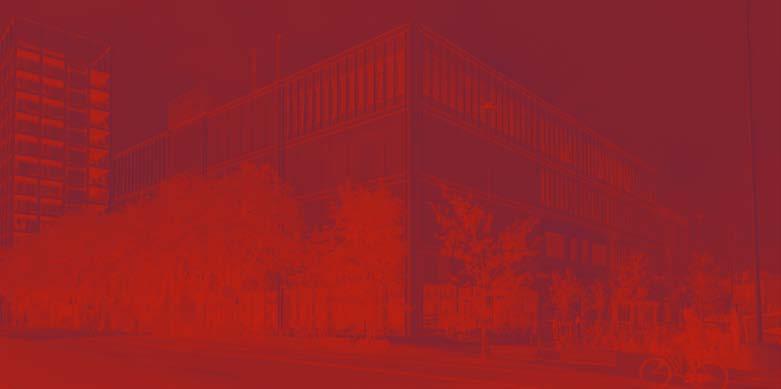

STUDENT HANDBOOK
INTRODUCTION
THE STUDY PROGRAMME
GUIDANCE AND ASSESSMENT
CONTENT
SUPPORT
FACILITIES
ASSOCIATIONS
WORTH KNOWING
OVERVIEW
INTRODUCTION
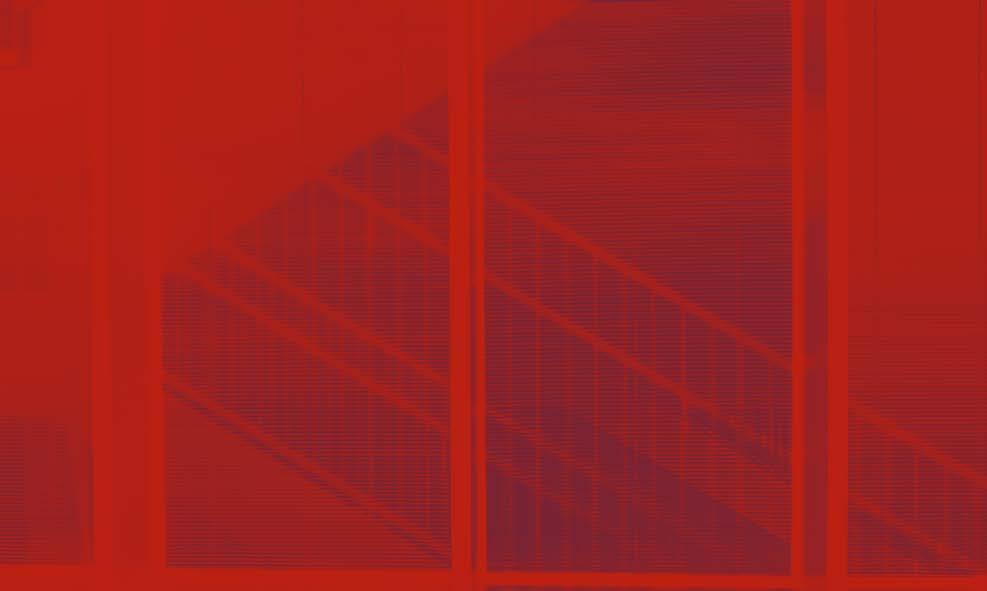
WELCOME
ABOUT THE SCHOOL
WELCOME
Dear students,
Welcome to Aarhus School of Architecture – and to a new academic community of almost 600 fellow students, more than 150 employees, and an exciting profession in continuous development. At Aarhus School of Architecture, we strive to promote the sustainable development of architecture in a global perspective based on knowledge of our local Nordic nature, culture, and architecture.
In the course of your five-year architectural education, we are going to give you, the architects of tomorrow, the skills and knowledge necessary for creating good living environments, places, and spaces that support the sustainable societies of the future. We will equip you to work in an experimental and investigative manner while using researchbased knowledge. You will receive training in transforming complex and relevant problems in our society into architectural statements and solutions
that relate to both history and contemporary conditions in a meaningful manner.
You are going to encounter the different disciplines and scales of architecture: from landscape architecture to urban development, the building, and the immediate scale – with a focus on reusing and transforming the buildings that are already there. We put a high value on the well-being of our students. For this reason, we continuously work towards improving our learning and study environment by accommodating differences and diversity. We believe this helps create the best possible environment for learning and developing.
The architectural education offered by Aarhus School of Architecture is very special – and I hope this is something you will soon notice. It is a prioritythat all students should have a drafting table of their own, where you can share knowledge and help each other through feedback and discussions - and where you can create a very special study environment together. We believe in a form of learning that allows time
for academic immersion through project work, which is continuously developed through shared discussion and reflection. The project work is complemented by courses that run throughout the entire program, providing a broad foundation of knowledge and methods.
In 2021, we moved into a newly constructed school of architecture. Today, this building is the setting of our day-to-day community. This is also where you have the opportunity of participating in a wide range of academic and professional events, student association activities, and initiatives across the entire school.
I hope your studies will get off to a good start –and that this study handbook will help answer any questions you might have about the education, the school, or our facilities.
Welcome!
Sincerely,
Kristine Leth Juul Rector
ABOUT THE SCHOOL
Aarhus School of Architecture is an institution under the Ministry of Higher Education and Science and has as its objective on an artistic and scientific level to offer education in architecture until the highest level to practise artistic innovation work, and, on a scientific basis, to carry out research within the field of architecture.
Aarhus School of Architecture has about 600 enrolled students of which 130 are international plus a staff of about 140.
Rector Kristine Leth Juul
Director Christian Koch Ramsing
Prorector Thomas Bo Jensen
Address Arkitektskolen Aarhus Exners Plads 7 DK - 8000 Aarhus C
UDDANNELSEN

PROGRAMME STRUCTURE
LEARNING FIELDS MODE OF STUDY
STUDIES ABROAD
INTERNSHIPS
PROGRAMME STRUCTURE
Bachelor programme
The Bachelor’s Degree Programme is a threeyear programme that provides all students with an academic and architectural foundation. The first semester of the programme introduces the education’s six fields of learning and the basic methods and tools.
In the following semesters, students work with the architecture through several themes with a special focus:
Semester 2: Landscape, Place and Building
Semester 3: Transformation, City, and Buildings
Semester 4: Home, Space, and Building
Semester 5: Transformation, Building, and Detail
Semester 6 gives students an opportunity to choose between an internship and a period of studies abroad.
Master programme
The Master’s Degree Programme is a two-year educational programme. The programme allows students to specialise in an area of architecture. Students choose an area by choosing a design studio they then follow throughout the programme. In the design studios, students work with a special architectural focus in connection with the courses of the programme.
Web Find the academic regulations on the school website: https://aarch.dk/en/curriculum/ Email studieadministrationen@aarch.dk
LEARNING FIELDS
The architectural education is structured around six fields of learning. This means all the components you need to complete during the programme are based on one or more of these fields. The description of the six fields of learning are as follows:
Insight into Nature is concerned with understanding the processes of nature in relation to the ground we build on and the climate and ecosystem of which we are a part. Architects should learn to build with nature and its material cycle rather than against nature.
Cultural Understanding is concerned with culture as an evolutionary process that embodies history and connects us with building cultures that are continually evolving. Social awareness, cultural heritage, and an
understanding of context are fundamental, formative pillars for students of architecture.
Artistic Formation is one of the core competencies of architects. It is, first and foremost, beauty, achieved through artistic and aesthetic sensibility, that should ensure long lifetimes for cities and buildings. Artistic formation is tied to the history of the discipline and is connected with an understanding of craftsmanship, materials, spaces, and forms - but is also nourished by other artistic disciplines.
Architecture & Scale is concerned with the ability to understand and sense the many overlapping scales that underpin the planning, organisation, and design of our landscapes, cities, and buildings. The ecological crisis calls
for a new understanding of scale that involves thinking in terms of contexts rather than isolated entities.
Architecture & Technology is intended to strengthen the students’ abilities to translate knowledge about nature and culture into aesthetically and socially relevant buildings and spaces through materials and constructions – articulated through a fundamental understanding of tectonic sensibility.
Architecture & Practice is intended to mature the students’ understanding of architecture as a scientific discipline and professional practice based on interdisciplinary collaboration, promoting the development of an independent professional expertise and identity in architects.
TEACHING METHODS
Throughout the education you will encounter several teaching methods. The first semester of the Bachelor’s Degree Programme is a coherent course comprising lectures and exercises.
Following this, all semesters in the programmes are structured to consist of two course blocks of three weeks each, followed by a project course. The compulsory courses of the programmes are courses that introduce students to knowledge, theories and methods through lectures, typically supplemented by individual and group-based exercises and self-study based on reading.
In both the Bachelor’s and Master’s Degree Programmes, some course blocks contain study trips. The study trip involves working with architecture in its built form – in conjunction with an understanding of history, theories, and context. For study trips, students choose between several offers, making it possible for students to adjust the education.
The Master’s Degree Programme allows for further specialisation by means of elective courses. The electives allow students to further individualise their specialisation by choosing from among a range of elective courses offered by the school.
After two course blocks of each three weeks, the project-oriented courses begin. In these
courses, students work individually to create a project based on a predefined assignment within the theme of the semester. We call this mode of teaching design studio. Teaching involves individual supervision in connection with the students’ work on their projects. A significant part of the learning is the result of peer to peer feedback among students.
Students are assigned a work space in the school’s studio spaces. For courses, students are places together with students who follow the same course, and for design studio courses they are placed together students who are in the same design studio. In design studio courses, students work on projects in the school’s studio spaces, where they also receive individual supervision.
STUDIES ABROAD
Studies abroad have become an integrated part of the planning for many students of architecture.
Various support programmes and Aarhus School of Architecture’s participation in different networks have opened up so that it is possible for the students to have cultural and professional inputs through studies abroad.
Studies abroad can be approved during the 6th semester of the Bachelor programme and the 2nd semester of the Master Programme.
Information about possible institutions and rules on possible support options are changing all the time, so it will be necessary for you to be given further counselling by the international coordinator of the school.
Email jhel@aarch.dk
INTERNSHIPS
Aarhus School of Architecture makes a determined effort to prepare you for the professional reality that awaits you when you have finished your studies. Therefore, the internship (or exchange studies abroad) is an obligatory part of your 6th semester.
The purpose is to strengthen your project development skills and give you the ability to focus your further studies. Internships therefore give credit points.
The period of internship is five months.
VEJLEDNING & BEDØMMELSE
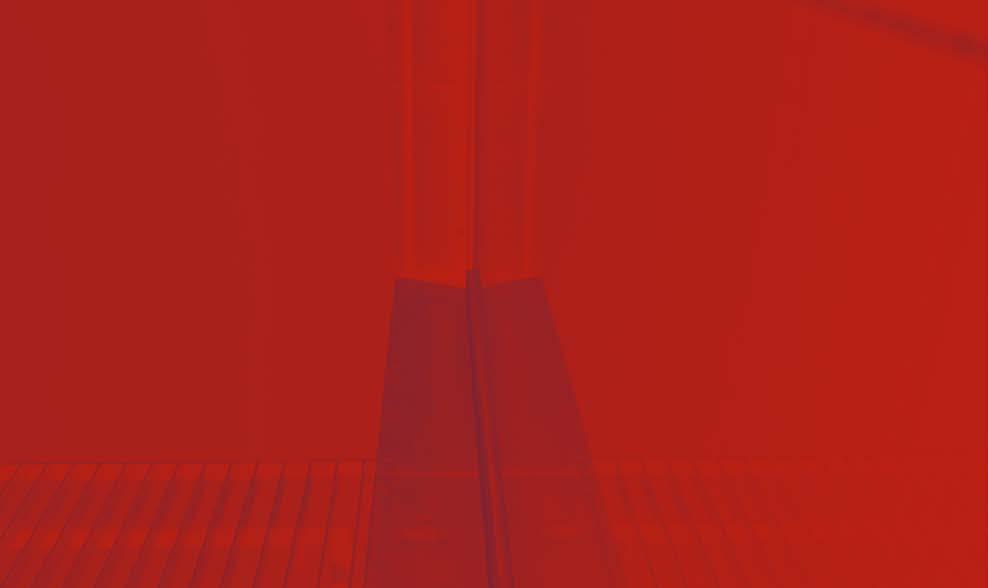
ACADEMIC SUPERVISION ASSESSMENT
ACADEMIC SUPERVISION
The supervisors are the employed teachers of the school, professors, associate professors, assistant professors, professional assistants and occasionally PhD students as well as guest lecturers or variable external tutors invited to perform specific educational courses.
Supervision can be individual or group based. Individual tuition is most likely to take place at your personal station in the unit/studio and should be a discussion of your research, ideas, sketches etc. between you and your teacher.
GUIDANCE & ASSESSMENT – ASSESSMENT
ASSESSMENT
The education consists of a number of educational components concluded by an assessment. Each component is assessed separately. The assessment form of each educational components is described in the academic regulations for the Bachelor and for the Master programme, respectively.
Marking
Educational components are graded as approved/not approved, or with a mark based on the Danish 7-point grading scale.
ECTS credits
All programme elements have been given a number of ECTS credits (European Credit Transfer and Accumulation System). The system is to ensure comparability within further and higher education programmes in the EU. Full-time studies for one year correspond to 60 ECTS credits.
Web Find the academic regulations on the school website: https://aarch.dk/en/curriculum/
SUPPORT
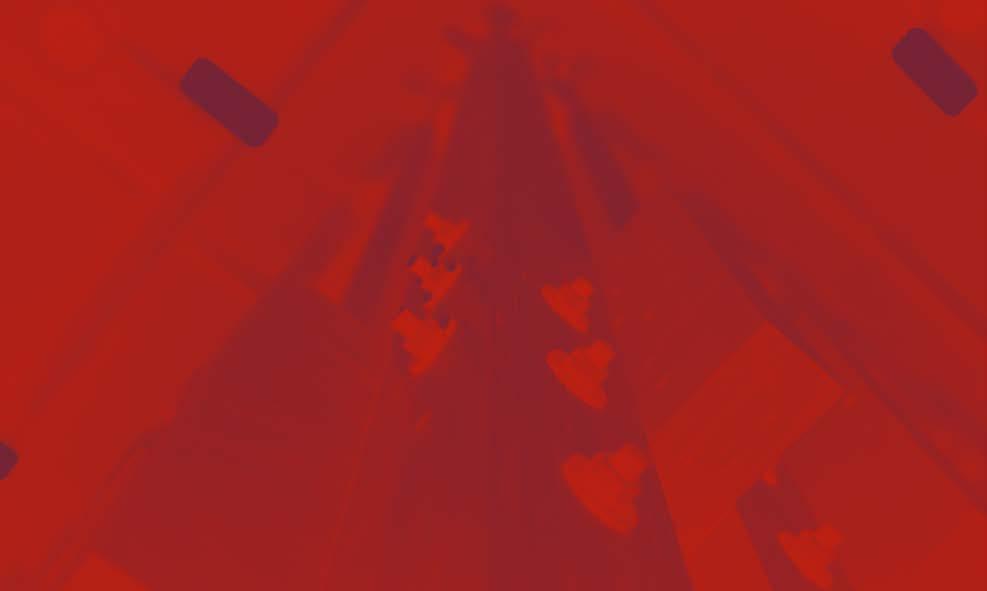
STUDY ADMINISTRATION
STUDY COUNSELLING IT-SUPPORT
JANITORS
KARRIEREVÆRKSTEDET
STUDY ADMINISTRATION
This is where you find answers to your question regarding studies, admission, SU (The Danish students’ Grants and Loans Scheme), Special Educational Support, practical training, studies abroad, sabbatical leave, course administration, final examination, etc.
You can always call or email – and if you need to talk, we can make an appointment.
Email studieadministrationen@aarch.dk
Web Find staff from The Study Administration at the school website aarch.dk under ‘Staff’.
STUDY COUNSELLING
You can talk with the study student counsellor, student study advisors, or a psychologist. You are welcome to contact us whenever you need.
You can contact us if there are issues that affect your study. Our conversations will always be confidential.
Topics can range from talking about various rules and study-related choices to your wellbeing at the study programme. The session will, of course, be based on your needs.
See what we offer and who you can contact:
Student study advisors
- Admission
- Planning of courses of study
- Various study related choices - e.g. choice of educational programme
Study Counsellor
- Rules and exemptions
- Leave
- Special support needs
- Study techniques
- Doubt about your study choice
- Lost motivation
- Stress
Psychologist
It is possible to get free psycological counselling through Studenterrådgivningen.
Student study advisors
Telephone 8936 0149
Email studentervejleder@aarch.dk
- 13.00 in Meeting Room M4
Study Counsellor Stine Skou Nielsen Telephone 8936 0150 Email ssn@aarch.dk Psychologist
You can book an appointment with Studenterrådgivningen through their website: www.srg.dk
IT-SUPPORT
The IT-team will be ready to help you. Support is free on services made available by the school: Connection to wireless net, printers, shared drives and questions about your user/ e-mail account.
Communication on practical matters, study activities, etc. mostly takes place digitally via e-mails and Intra. All students are automatically given a mailbox at the school.
Your e-mail address will be your user-id@stud.aarch.dk, and you can read your e-mails on https://webmail.aarch.dk.
It is your responsibility to check your e-mails regularly and, in case you forward e-mails, to have a valid forwarding address.
Print account
On http://printpay.aarch.dk:9191/user you can log on to your printing account and add money using a credit card. Request for refund of prints not being printed can be found under ‘Recent Print Jobs’.
JANITORS
The janitors assist with practical matters. The janitors are responsible for the school building and outdoor areas.
If you have any questions or if you need help with big or small problems, you can always write an email to drift@aarch.dk.
KARRIEREVÆRKSTEDET
In KarriereVærkstedet, you gain insight into working life as an architect, meet architects who work with architecture in different ways in practice, and receive personal guidance.
The focus is on the many career opportunities available to architects in general—and to you personally—both as an architecture student and a future architect. Each semester, we invite you to activities where you can meet young architects, get inspired by possible career paths in the world of architecture, and strengthen your choises as architecture student.
Keep an eye out for invitations in your student email and posters around the school. We look forward to seeing you :)
• TALKS / young architects share their experience with work+life in architecture
• ON LOCATION / visit to architect offices / dialogue and networking
• 1:1 / Book a personal meeting with the school’s career counsellor
• COURSE / 3-week course in your 4th semester about practice portfolio, internships, exchange opportunities, work life, and architectural practice
• TRANSISTION / lunch meeting for new graduates about work life as architects.
InSpe
InSpe is the integrated student run part of KarriereVærkstedet - read more on page 33.
FACILITIES
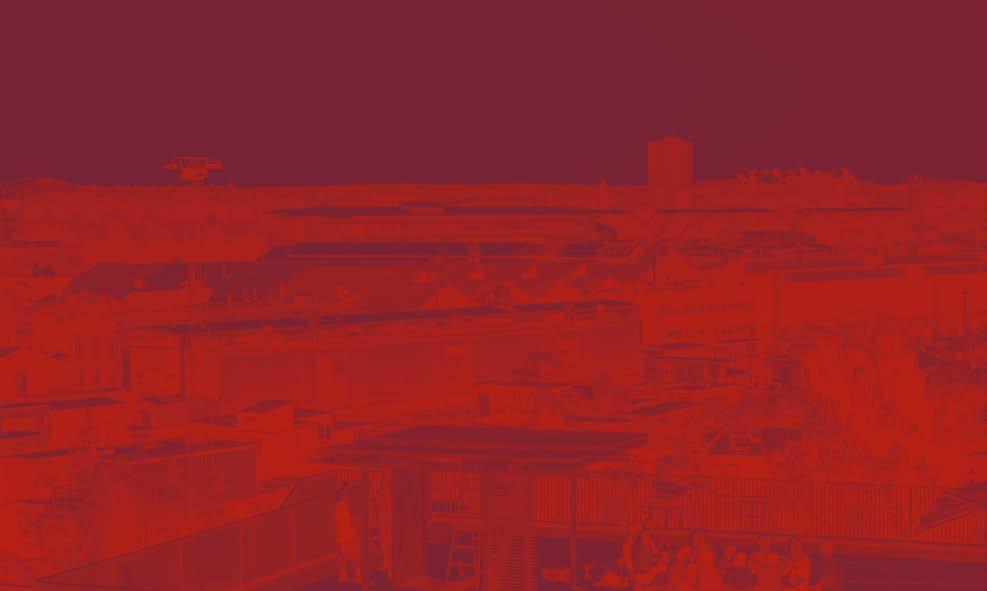
FABRICATION LABS
LIBRARY
FABRICATION LABS
At Aarhus School of Architecture, we take pride in our good workshop facilities - and they are an integral part of teaching at the school. In the school’s workshops, you can explore a wide range of different materials, and you can produce models and designs in full scale. We have different facilities for different material types and processing techniques. The workshops are staffed by people who can help you with the machines in relation to your project. The machines must always be cleaned and all leftovers removed after use.
Mock-up
The mock-up is where you can build quite large structures, and it is where you can
arrange workshops. The location and duration of all activities in the mock-up need to be agreed on with the person in charge of the workshop beforehand.
Model workshops
On each of the three floors of studios, a room has been specially arranged for model work. Here you can use hot wire cutters, and several small 3D printers can be used free of charge.
Wood workshop
The wood workshop contains machines for processing wood. Apart from some hand tools, there are circular saws, surface planer machines, thickness planers, stationary milling cutters, lathes, and various grinders.
Mock-up and model workshop
Contact Kasper Kronstrand Telephone 89360316 Email krj@aarch.dk
Wood workshop
Contact Therese Winther-Hansen Telephone 8936 0337 Email twh@aarch.dk
Metal Workshop
The Metal workshop contains machines for processing metal, e.g. a metal and a plate cutter, a bending machine, a pillar drill, and a welding plant. Apart from an introduction to the workshop, using the welding machine requires a special safety course, “Arbejdsmiljø og sikkerhed, svejsning/termisk”offered by e.g.
Aarhus Tech.
Robot lab
We have a large and several smaller ABB robot arms. The determining factor in what the robots can work with are the tools mounted on the robot. For instance, milling tools for working in wood or band saws with diamond blades for working in stone. Please contact the person in charge if you have an idea for something you would like to test in The Robot Lab.
CNC machines
We have a 5-axis CNC machine for milling larger elements in wood based on a 3D model. Please contact the person in charge if you have a project you would like to do.
Cutting machines
We have three different digital cutting machines that can be used for cutting sheet material based on a digital drawing.
• A laser cutter: Cuts through a combustible material such as cardboard or MDF boards using a laser.
• A digital cutter: Uses an oscillating knife tool to cut elements in e.g., cardboard sheets.
• A digital cutter: Capable of cutting elements from e.g., MDF boards, plywood, or aluminium.
Metal Workshop and cutting machines
Contact Kasper Kronstrand
Telephone 89360316
Email krj@aarch.dk
Robot Lab
Contact Jakob Sieder-Semlitsch
Telephone 8936 0339
Email jss@aarch.dk
CNC machines
Contact Tom H. Bruhn
Telephone 8936 0338
Email tbh@aarch.dk
Casting Lab
In the casting lab and the area located next to it, you can work with concrete and plaster casting. These materials require special sewer conditions. At the school, you are consequently only allowed to work with these materials in this area, and it is essential that the room and equipment are handed over completely cleaned after use.
Dust from gypsum and concrete is harmful to your health if inhaled. We therefore recommend you always use dust masks when handling powdered materials.
3D Printing Lab
The school disposes of several different types of 3D printers, located together in a workshop on the second floor. Here you will find an EOS 3D printer for items that require particularly high quality in terms of surface and material
strength. Several small 3D printers have also been installed in the three model workshops.
Spray Room
A special room at the school has been arranged for working with spray paint and spray adhesives. A wall with strong exhaust ventilation makes it possible to work with these products in an environmentally sound manner. Working with spray paints and spray adhesives is only permitted in this room.
Casting Lab and Spray Room
Contact Kasper Kronstrand
Telephone 89360316
Email krj@aarch.dk
3D Printing Lab
Contact Jakob Sieder-Semlitsch
Telephone 8936 0339
Email jss@aarch.dk
CANTEEN
The Canteen is the place where students, employees and guests meet and eat together.
The canteen serves meals at affordable prices - prepared using good and often organic ingredients.
LIBRARY
At the library you can be assisted in seeking information and relevant materials for your studies, or you can browse the shelves by yourself and explore our large collection on architecture, design, urban planning, etc.
You can also use the library to read the latest magazines, or maybe you want to dig into our vast video collection.
The Library is a part of the study environment at the school, and it contains both quiet study places and space set aside for group meetings and project work.
The Library also includes an exhibition area, where students can display their work.
Before you can start checking out and book materials, you need to be registered as a loaner and have your account activated.
You register in our online catalogue. Make sure to read the library regulations first, as you agree to these when registering.
The staff is looking forward to welcoming you all at the Library. Telephone
MLAB - THE MATERIAL LAB
MLAB is located on the ground floor of the Library. Here you can familiarise yourself with both the classical and the most recent materials.
As the collection grows, it will be continuously updated and include material data properties, fabrication techniques, and extensive knowledge about usage.
Samples are categorized by their core material, and you navigate these by searching our library database online or by browsing through the physical materials exhibited.
MAP ARCHIVE
Aarhus School of Architecture have access to a variety of printed and digital maps.
Printed and historical maps can be found at the Library and digital maps can be accessed via the network drives by using a dedicated GIS application.
The Digital Map Archive is physically located in the Library, here you can get help and guidance with regards to the use of digital maps.
PRINT SHOP
In the Print Shop you can colorcopy and print on high-volume laserprinters and large-format Inkjet-printers from size A5 up to A0.
We also offer access to a number of finishing machines.
NB: Students have 24-hour access to a largeformat cuttingmachine, two large-format scanners and three plotters at the 24-hour print shop – all you need is your key tag.
Print Room 1 24-hour access
Staff is only available during Archi Tegns opening hours
Print Room 2 24-hour access
For technical issues contact IT or The Print Shop
ARCHI TEGN
The shop sells almost everything for drawing and model building. Furthermore, it is a specialist architectural bookstore, with a large selection of publications from Danish and foreign publishers.
ASSOCIATIONS
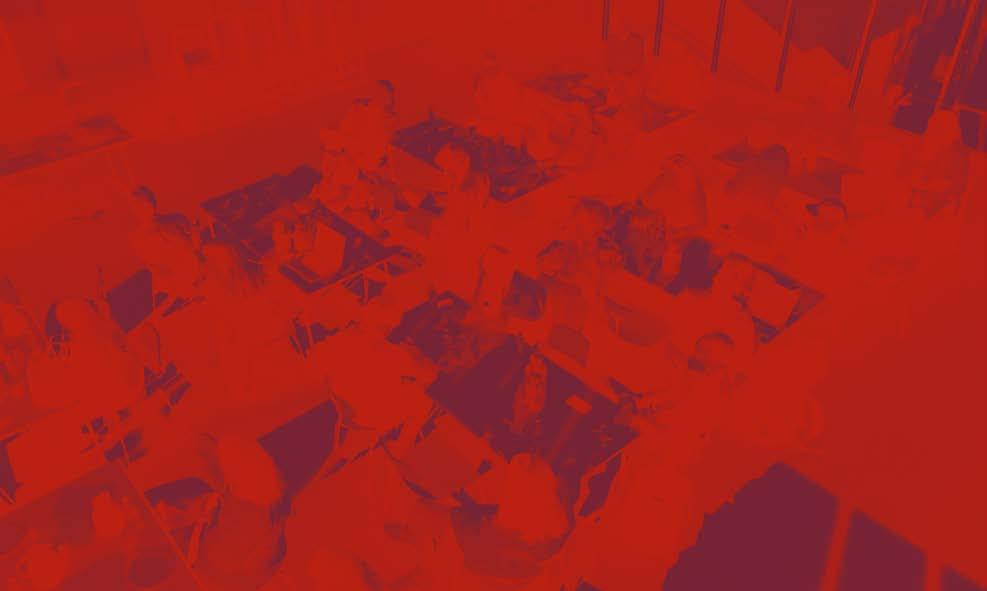
INSPE
STUDENT COUNCIL
KÅRK
INSPE
InSpe is the student-driven part of KarriereVærkstedet (page 23), where you can learn more about job opportunities as an architect and meet young architects who share their experiences and offer advice to you.
Throughout the academic year, we invite you to various career-reflective activities for your inspiration and free use.
If you have ideas for architects we should invite or if you have any questions, feel free to contact the InSpe coordinator at KarriereVærkstedet at inspe@aarch.dk. Email
STUDENT COUNCIL
The Council of Architecture Students is the voice of the school’s students. We strive to make the education at Aarhus School of Architecture even better. Furthermore, the association relates to educational policies, local politics, and other policies relevant to students of architecture. The Council of Architecture Students is a member of the National Union of Students in Denmark (DSF).
Our meetings are open to all students of Aarhus School of Architecture. We look forward to seeing you, regardless whether you want to attend regularly or only once, because you are interested in a particular case or problem that you want to address.
Apart from students from the school’s various units and studios, representatives of the students from the school’s various bodies also participate in the meetings (e.g. The School Board, The Study Board, and InSpe). So, regardless of the nature of your issue, there is a good chance we can help you find a solution.
Email studraad@aarch.dk
Facebook facebook.com/DARaarch
ARKIBAL
ArkiBAL is the school’s event association. We create inspiring and festive settings for the school’s parties, Friday bars and other social events.
We are big on theme parties. We love creating fun and playful decorations for the parties and are very ambitious. We usually build different decorations in the afternoons while we listen to music and have a cosy time together.
ArkiBAL is a great place to meet students from different years and get to know each other. The work in ArkiBAL has many sides to it - we have different teams that work with different aspects e.g. the bar team, the tech team and the building team.
In ArkiBAL, you have the opportunity to go crazy and try new things like building a 1:1 elephant, learning to DJ or managing a bar.
This is a place to have fun with friends and break loose from your architecture studies. We also spend time together and hang out just for fun - sometimes we throw a private party, eat dinner together or even rent a summer house for a weekend and go away together.
We have a weekly meeting every Tuesday during lunch break in New Neighbour, and you are always welcome to join!
You can follow us on Facebook and Instagram.
Email arkibal@stud.aarch.dk
Facabook facebook.com/arkibalaarch
Instagram @arkibal_
KÅRK
KÅRK is published by architecture students for anyone with an interest in architecture. A student-run initiative with the editorial board in Aarhus and Copenhagen.
With the publication, we aim to provide a mirror projecting outwards, and between each other, what is produced and worked on within the walls of Aarhus School of Architecture and The Royal Danish Academy – Architecture, Design, Conservation.
The magazine is a place for exhibition as well as discussion. For thoughts and reflections. With contributions from students and staff, we wish to inspire and be inspired and hopefully learn from each other.
Every issue explores a different theme. Through the reflections of academics and students associated with our institutions, we gain and create knowledge, shed light and raise questions. Within one of three sections, themerelated material is packed in one continuous collective conversation - projects, articles, interviews and speculations come together, create new perspectives, new visions.
Each issue of Kårk is launched as a two- and three-dimensional dialogue between the two institutions - magazine, exhibition, celebration.
Email kaark@stud.aarch.dk Instagram kaark_magasin
KONTUR
KONTUR is the art and culture association at Aarhus School of Architecture. We aim to create a framework for a hybrid creativity outside the school schedule.
In KONTUR we meet for the joy of expressing ourselves creatively in an inclusive community. We meet every Wednesday at 12 where we plan various events, ranging from croquis to film screenings to exhibitions. Everyone are welcome at every konturmeeting and we always have fun and a great time together!
If you want to know more about KONTUR, you can find us here! Instagram @kontur_aarch Facebook Kontur
Mail kontur@stud.aarch.dk
SAFETY & EMERGENCY
WORTH KNOWING

COMMUNICATION
RUSTOUR
COMPETITIONS & WORKSHOPS
SMOKING
UNIONS & ASSOCIATIONS
OPEN ARCHITECTURE DAY
GET READY FOR STUDY START
NEW NEIGHBOUR
SAFETY
Teachers and students may come in contact with materials and products that can be harmful to their health and when used the wrong way dangerous. Therefore, they must be handled with care and attention, and the safety instructions must be abided by. If this is not the case, teaching can be stopped immediately by the head of security.
Product and information folders
Teachers as well as students are under an obligation to familiarise themselves with the contents of the information folders placed in central spots at the school. The folders contain information about the individual products, user guides and instructions on how you should conduct yourself in case of accidents.
Special precautions
Spray products and paint may ONLY be used in facilities with mechanical ventilation specifically designed for this purpose on the ground floor.
Work with foam materials using electric hotwire cutters must also be carried out in the designated facilities. These areas must be cleaned up on a daily basis.
You may only work with plaster, cement, mortar, clay, and similar materials in the cement workshop – and users are responsible for cleaning and tidying the workshop after use each day.
EMERGENCY
It should be safe and secure to study at Aarhus School of Architecture. That’s why emergency plans are in place, and there is a strong focus on the physical working and study environment.
Defibrillators
There are three defibrillators installed at the school: two inside the building and one outside. You find them at the following locations:
Canteen – mounted on the wall in the hallway by the goods elevator
By Project Room 1 on the 1st floor – mounted on the wall in the hallway leading to staff offices
Outside Mock-Up – mounted on the wall under the stairs. See also the location of defibrillators on the school’s floor maps.
First Aid Kits
First aid kits are available in the following areas: the Wood Workshop, Assembly Workshop, Model Rooms 1, 2, and 3. There is also one at the reception in the canteen (contact Archi Tegn for access). All model rooms are also equipped with containers for used batteries and sharp objects.
Fire Safety
In case of fire, head toward the nearest green EXIT sign and proceed to the nearest assembly point.. Fire routes and regulations must be respected, and escape routes must be kept clear at all times. In the drawing studios, fire escape routes are marked with floor tape. Any items left in these routes will be removed immediately.
COMMUNICATION
Aarch.dk
On the school’s webpage aarch.dk you will find news from and about the school, information about public events, exhibitions, academic regulations, etc. You can also read more about studies and supplementary education offers, research, the library and our fabrication facilities.
Intra (Ziik)
Intra (Ziik) is the school’s intranet where you will receive informations related to yor studies from the administration and management. And you can find regulations and information relevant to you as a student.
You can log on Intra in a browser with your school email and password. And you can download Intra
as an app to receive notifications on your phone.
The app is named Ziik.
Moodle
Moodle is an internal communication system. It is primarily a platform between students and teachers. Here, teachers post assignments and students post their work. Everything related to studies is published here: guidance, critiques, lectures, study tours etc. – along with any changes to programmes.
You can also find us on Instagram and LinkedIn where we continually post news from the school and share updates about architecture related subjects. Further we have a video channel on Vimeo.
Website aarch.dk
Moodle moodle.aarch.dk
Intra aarch.ziik.io Instagram @aarchdk
LinkedIn linkedin.com/school/aarhus-school-ofarchitecture/ Vimeo vimeo.com/aarch
RUSTOUR
Every year before the beginning of the autumn term the freshmen event welcomes new students to the school.
The positions as lead planners are announced in April and the lead planners are to arrange and manage the event and hire the co-planners.
The team of 50 student volunteers warmly welcomes the new students with a week of events. The rustour is a social event that introduces the students to the school, each other and the different organizations at the school.
Email rusforeningen@stud.aarch.dk
Website rusforeningen.aarch.dk
COMPETITIONS & WORKSHOPS
As a student of architecture you are qualified and have the opportunity to compete in national as well as international competitions and take part in various workshops and courses.
Aarch Board
On the school website aarch.dk, you find Aarch Board, where you can see current student jobs, internship proposals, competitions, and events relevant to school students. Submissions are published by architecture companies and others who want to reach the school’s students with their announcements.
Website aarch.dk/aarch-board
SMOKING
Smoking is not allowed inside the school, on the school’s terraces or around the building. Instead, there is a smoking area nearby at Onsite Gallery.
UNIONS & ASSOCIATIONS
The Union of Architects and Designers (FAOD) manage payment negotiation and working conditions for architects.
As a student of architecture you can get a membership of FAOD and gain advantages in counselling, membership activities, magazines and insurance discounts.
www.faod.dk
Arkitektforeningen
The Danish Association of Architects is an independent association with the purpose to support and promote architectural quality. The association counts about 7.000 qualified architects, who are entitled to use the protected title MAA.
With a student membership you have the privilege to attend events of the association and gain discounts on magazines, insurance and more. As a member you will also receive the specialist journal “Arkitekten”.
www.arkitektforeningen.dk
OPEN25 - ARCHITECTURE FESTIVAL
Each year, Aarhus School of Architecture hosts the international architecture festival OPEN. With a critical and exploratory approach to architecture, the festival aims to promote the important interdisciplinary dialogue across the wider architectural field.
OPEN25 – In the Eyes of the Ordinary will take place on Friday, September 19, and all activities that day will be dedicated to the festival. Students and staff of the school are, of course, invited – so remember to collect your free ticket – you will receive a ticket link by email.
What to expect?
The festival is dedicated to the broad field of architecture. On the festival’s six main stages, the more than a thousand paticipants can
experience both emerging and established voices through panel debates, conversations, performances, film screenings, and exhibitions. Everything unfolds within the unique setting of Aarhus School of Architecture. We also set up an outdoor camp with a stage, live performances, street food, and a student bar.
In the Eyes of the Ordinary
This year’s program is curated by Karen Kjaergaard in collaboration with Asal Mohtashami and Bendik Støckert.
Under the theme In the Eyes of the Ordinary, the festival explores the complexity of the ordinary and celebrates the worn and imperfect - in landscapes and urban cracks, in patinated facades that reflect our shared heritage and memory.
Everything unfolds within the unique setting of the Aarhus School of Architecture. For the occasion, we’ll also set up an outdoor camp with a stage, live performances, street food, and a student bar.
Website aarch.dk/en/open25/
Visit the event website to explore the programme and see the many speakers joining OPEN25.
GET READY FOR STUDY START
Together with The Study Counselling Service, Aarhus School of Architecture has created an online course for new bachelor students. The course introduces what it is like to be a student at our school. We have chosen to call the course ‘Get ready for study start’ (Bliv klar til studiestart).
The aim is to help new students to get ready for their studies at Aarhus School of Architecture. Participating is voluntary, and new students can access the course content when they want to, but we recommend that students complete it before the actual first day of term - or shortly afterwards.
The material consists of four modules, which in different ways provide an introduction to what it means to be a student at the school - the modules are called:
• From pupil to student
• Study habits
• Motivation that lasts
• Academic communities and working together
Bliv klar til studiestart
The online course will be available on the platform Moodle.
As a bachelor’s student, you will receive an email with further instructions to gain access.
NEW NEIGHBOUR
New Neighbor is a white, three floors container building located between the school and Institut for (X). On the first floor, the school’s student associations have established a joint, academic and social housing community with office facilities, meeting room and kitchenette. The second floor’s office space and meeting room are used for special purposes.
Before the school moved into Exners Plads, we established a temporary learning space at the construction site for teaching, project work and workshops. The building was part of supporting the new neighborliness (hence the name) and over the years, it has housed a number of small creative startups.
Spant Studio has designed New Neighbour; the building is constructed with a framework of Pro-Tran site hut elements on a custom-made steel structure between four 20’ high cube shipping containers with a total area of 350 sqm.
Front Yard
The student-driven project Front Yard focuses on the development of a green and active space – a new urban area – in the surroundings of New Neighbour. The project has received funding from the Villum Foundation, which ensures new permanent outdoor facilities for the benefit of the school’s students and neighbors.
MAPS
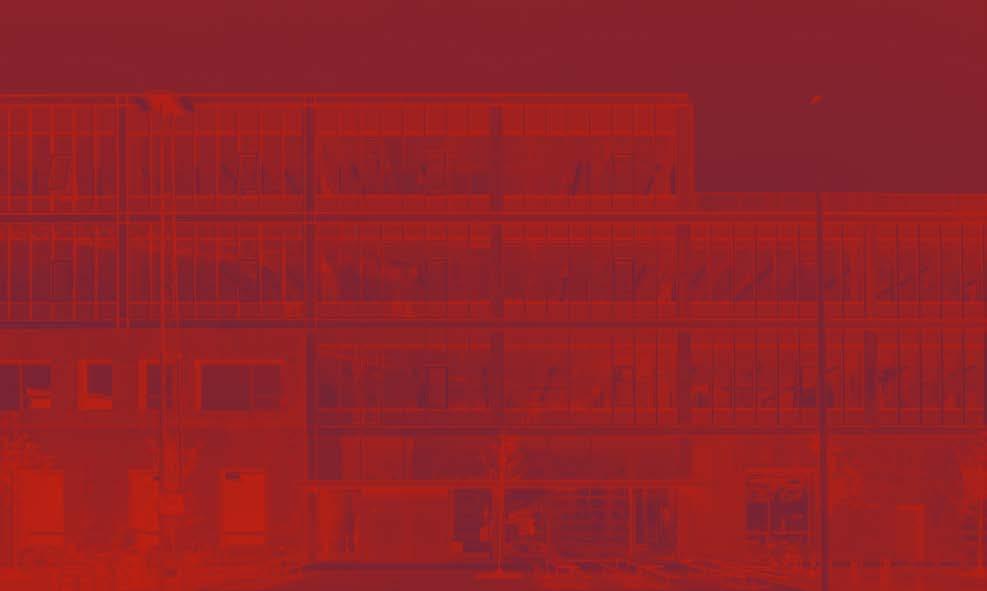
STUEN / GROUND FLOOR
1. SAL / 1ST FLOOR
2. SAL / 2ND FLOOR
3. SAL / 3RD FLOOR
MAPS – STUEN/GROUND FLOOR
STUEN / GROUND FLOOR
BYGNINGSDRIFT
DIDAKTEK AUDITORIUM
BIBLIOTEK
MOCK-UP
PERSONALE
ARCHITEGN M.2
IT PRINT 1
1. SAL / 1ST FLOOR
SEMINARRUM 1.3
SEMINARRUM 1.4
1
SEMINARRUM 1.2
SEMINARRUM 1.1
BIBLIOTEK
PROJEKTRUM 2
1
PROJEKTRUM 1
2. SAL / 2nd FLOOR
SEMINARRUM 2.3
SEMINARRUM 2.4
SEMINARRUM 2.2
SEMINARRUM 2.1
PROJEKTRUM 4
PROJEKTRUM 3
STUDIE RÅDGIVNING
KARRIERE RÅDGIVNING
PHD
PHD
SEMINARRUM 3.1
TEGNESAL 5
MODELRUM 3
PROJEKTRUM 5
TEGNESAL 4
ENGAGING THROUGH ARCHITECTURE

